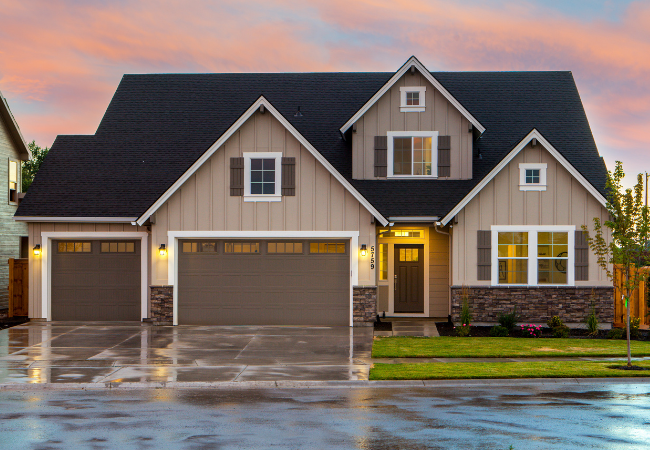When planning an exterior painting project, there is one critical factor to consider and that is the weather. The impact of weather on exterior painting is huge, affecting not only the painting process but also the drying time and the overall durability of the paint job. Understanding the role of different weather conditions on exterior painting can help you plan better and ensure a high quality finish. L.W. Winslow Painting. Inc would like to break down how the weather will influence an exterior painting project.
At what Temperature is it OK to Paint Outside?
Paint manufacturers usually provide a recommended temperature range for application, typically between 50 to 85 degrees Fahrenheit for latex paint, and between 40 to 90 degrees for oil-based paint. Too cold, and the paint may not adhere properly to the surface, leading to cracking and peeling. Too hot, and the paint may dry too quickly, causing it to blister or create an uneven finish. The temperature can also affect the curing process, and potentially reduce the lifespan of your paint job.
Humidity is Bad for Painting
High levels of humidity can greatly affect your paint’s drying time and the overall result of the painting project. Moisture in the air can prevent the paint from drying properly, leading to streaks or a poor bond with the surface. High humid conditions can also promote mildew and mold growth, which is particularly damaging for exterior surfaces. For the best results, aim for a day with lower humidity levels that are somewhere between 40% to 70%.
It is Bad to Paint when its Windy?
Wind can cause a wide range of issues for exterior painting. It can blow dirt and debris onto the wet paint, resulting in a flawed finish. Additionally, much like high temperatures, wind can also cause the paint to dry too quickly, preventing it from forming a proper bond with the exterior surface.
Do Not Paint when Rain is Expected
Rain is another well-known enemy of exterior painting. If rain is in the forecast, it is best to put off your painting project for a sunny day. Painting on a wet surface or if rain is expected before the paint has enough time to dry can lead to a number of problems, including diluted paint, streaks, and even washing away fresh paint.
Effect of Sunlight on Painting
While painting under direct sunlight might seem like a bright idea, it can cause the paint to dry too quickly, leading to clumps, brush marks, and uneven color. Ideally, you should follow the sun around your house, painting in the shade as the sun moves if possible.
Planning Around Weather to Paint Outside of House
Predicting the weather is an important part in planning your painting project. Use the weather forecasts to find a stretch of dry, mild weather days. Consider the temperature and humidity, both during the day and at night, as paint continues to dry and cure after the sun goes down.
Interior & Exterior Painting & More in Amagansett, Bridgehampton, East Hampton, Hampton Bays, Montauk, North Haven, North Sea, Noyack, Shelter Island, Sag Harbor, Shinnecock Hills, Southampton, Springs, Water Mill, Westhampton & Westhampton Beach, New York
Weather plays a huge role in exterior painting projects. Weather will impact everything from the painting process to the final outcome. For a faster and better quality exterior painting project consider seeking a professional painting service. For exterior, interior painting and more, contact L.W. Winslow Painting. Inc today.


